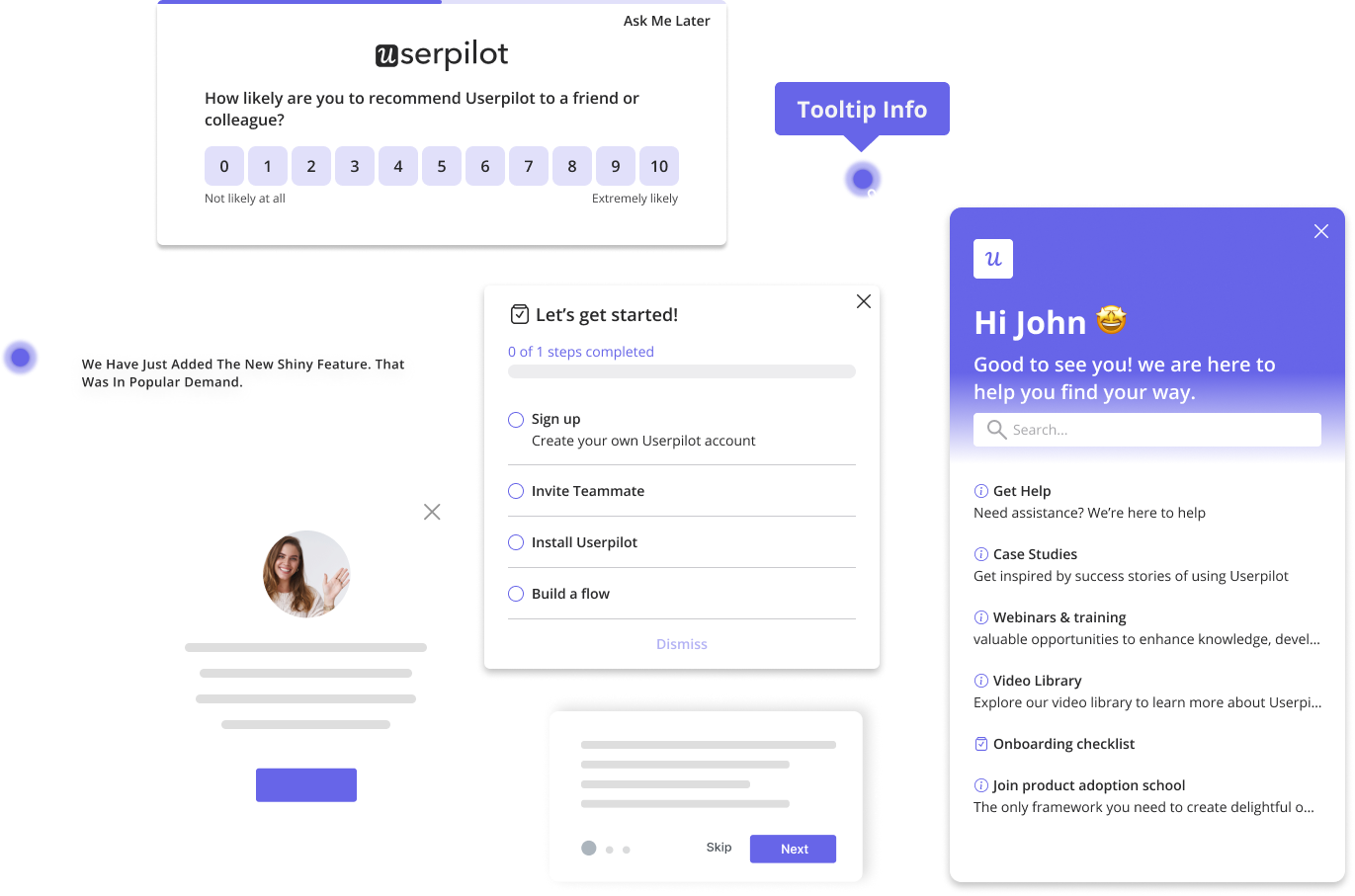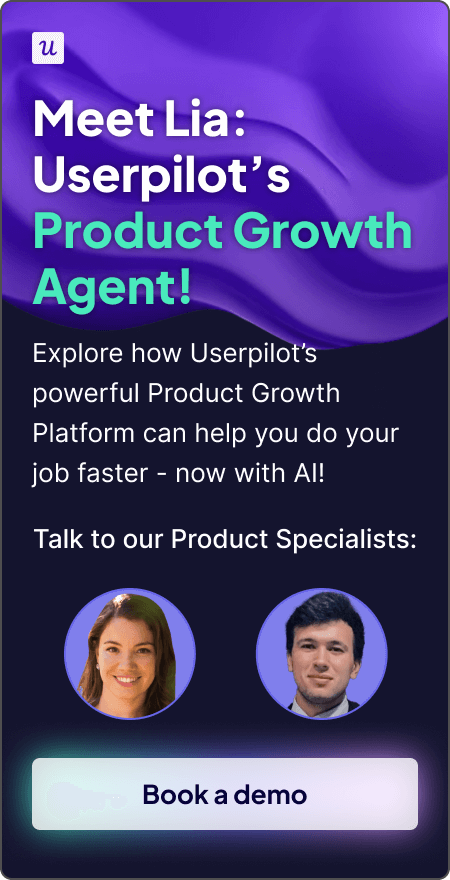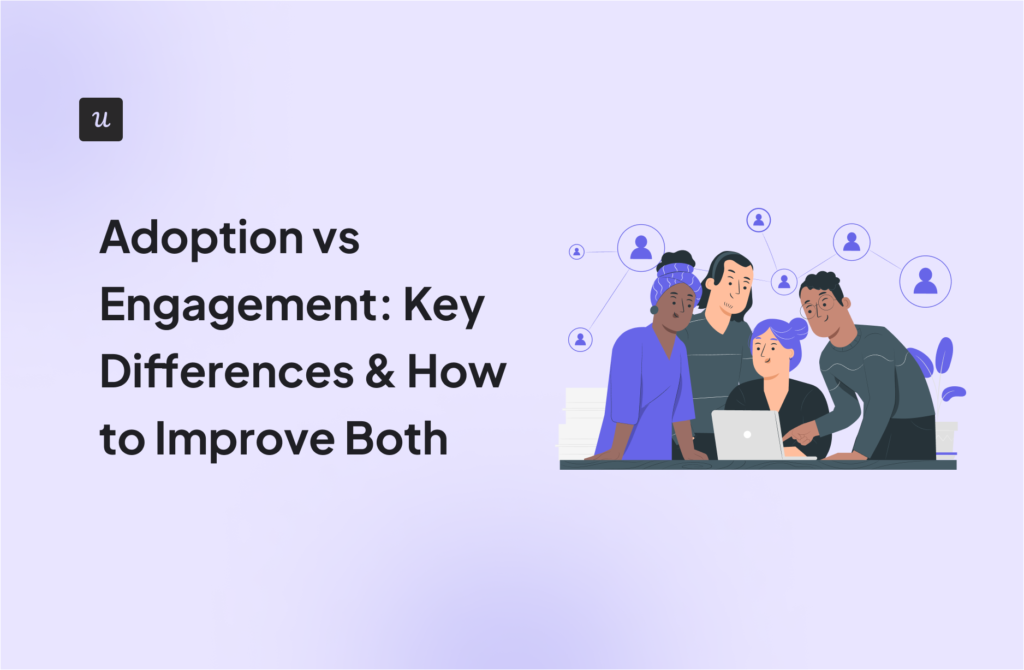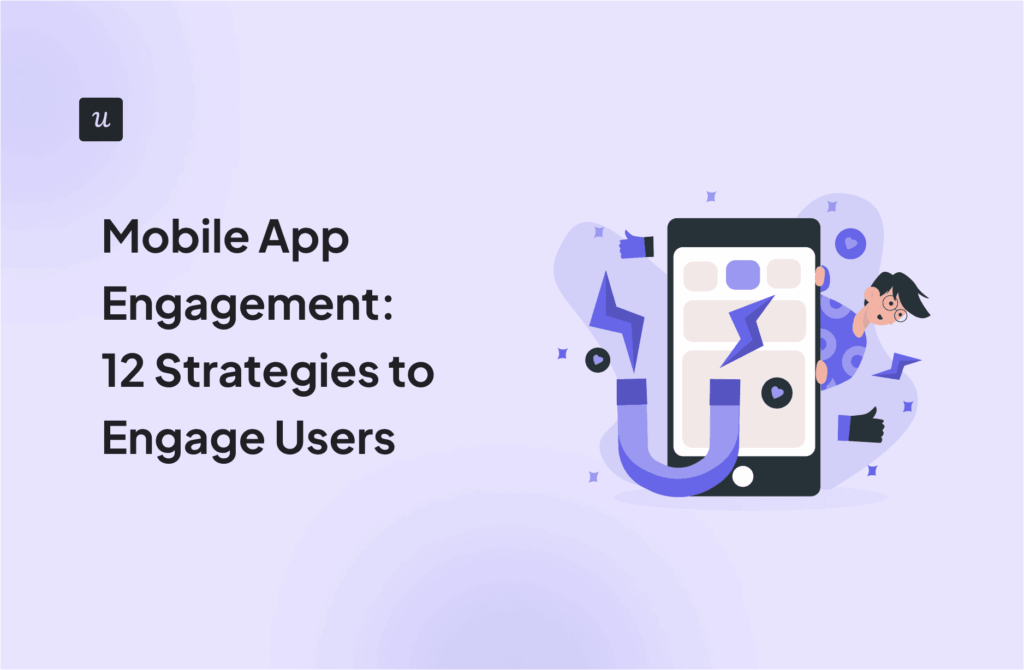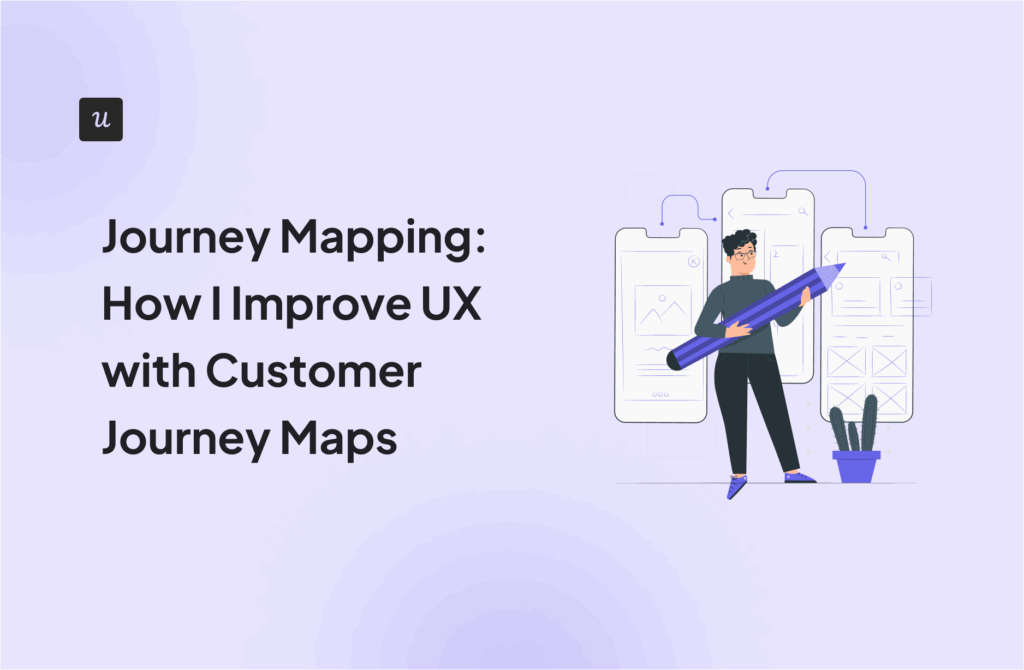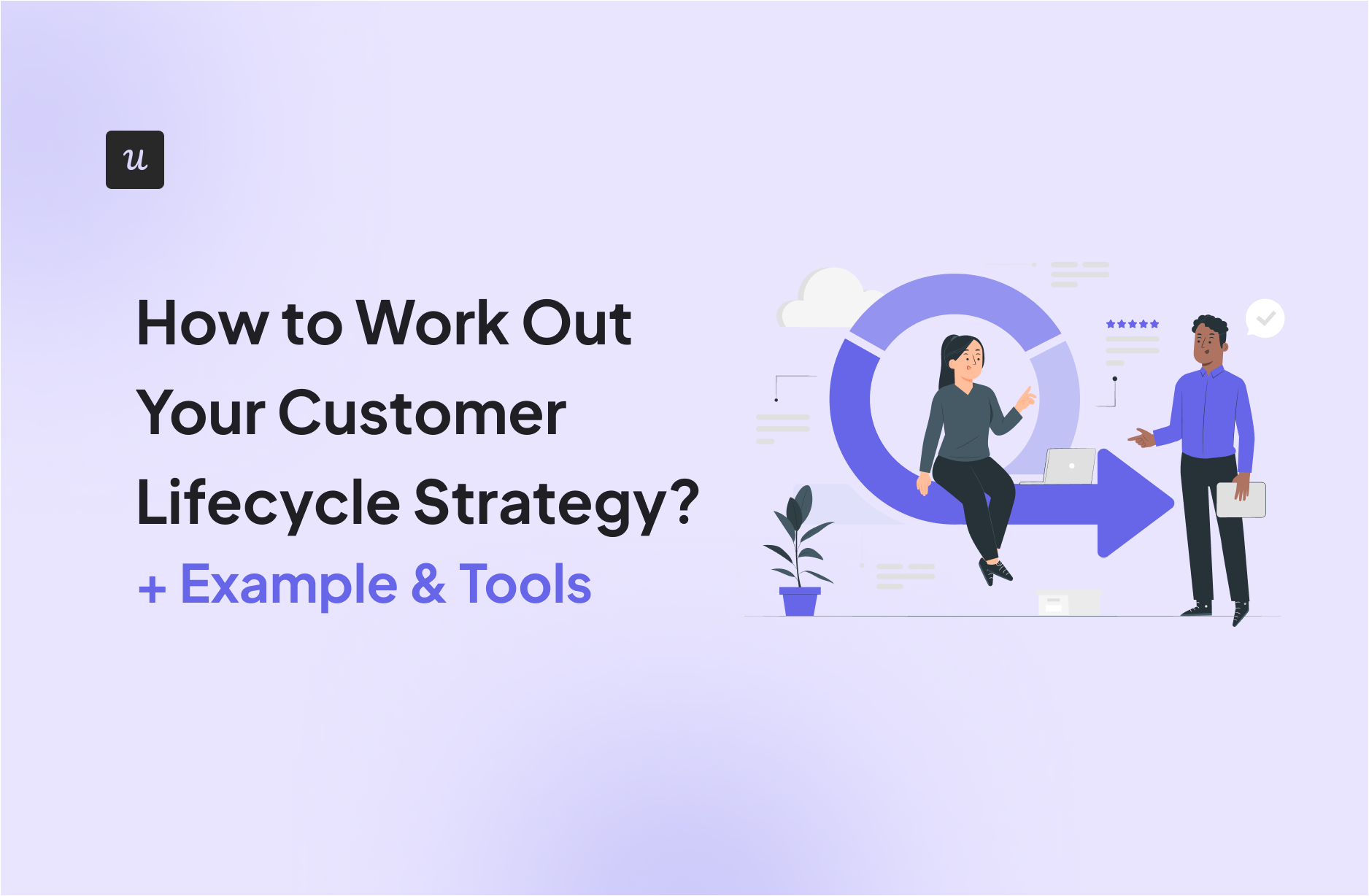
How to Work out Your Customer Lifecycle Strategy? [+ Example & Tools]
Try Userpilot Now
See Why 1,000+ Teams Choose Userpilot
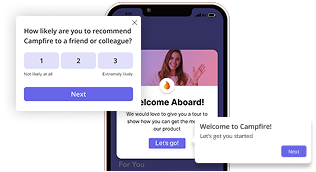
What are the customer lifecycle stages?
Let’s break down what the customer lifecycle refers to: key stages from the first moment someone finds your brand to when they become loyal advocates.
Just keep in mind that customers don’t always move through these steps in a straight line. They might skip ahead, circle back, or churn and return later. That’s why your lifecycle strategy needs to be flexible enough to support growth, recovery, and long-term loyalty at every step.
Awareness
This is where everything starts. Potential customers first come across your brand: maybe through a LinkedIn post, a webinar, a Google search, or a podcast mention.
At this point, they’re usually just realizing they have a problem and starting to explore solutions. They might not even be looking for your tool yet. That’s why building brand visibility and sharing helpful resources and content is so critical here. In my experience, the companies that invest early in this stage set themselves up for a healthier sales funnel down the line.
Engagement
Now that they know you, it’s time to deepen the interest. People follow your updates, subscribe to your newsletter, attend a product demo, or poke around your case studies. They’re in that consideration stage, weighing options, comparing you to competitors, maybe even testing a free plan.
In SaaS, this phase can stretch on for weeks or months. That’s why your customer lifecycle marketing shouldn’t just be chasing quick wins. You’ve got to stay top of mind with consistent, value-driven touchpoints that build trust.
Conversion
This is the first big milestone: turning interest into a signed deal or a paid subscription. For many SaaS businesses, this is when someone upgrades from free to paid or starts their first paid billing cycle.
But from where I stand, the real win is activation, i.e., getting current customers to experience your core value fast. That means they’re connecting integrations, inviting teammates, or running their first reports. Without that, purchase stage conversions are just vanity metrics, and you’ll lose people before they ever become valuable customers.
Retention
This is where most customers start to slip through the cracks. You might see teams celebrate the sale, then rush back to chasing the next new customer. But real growth depends on keeping users engaged, seeing continuous value, and staying happy with your product.
If your users aren’t regularly logging in, exploring new features, or expanding usage, they’re at risk of churning. I always tell our team: the retention phase isn’t passive. It takes proactive customer communication, smart campaigns, and success strategies that keep customers progressing along their journey.
Loyalty
When you’ve nailed the earlier stages, this is where it pays off. Loyal users stick around for years, upgrade to bigger plans, and bring you referrals. They become advocates, share your product on social, speak at your events, and even shape your roadmap through customer feedback.
At Userpilot, we track these signals closely because loyalty is where customer lifetime value really grows. This is the stage that turns your existing customers into your most effective marketing channel, because you’ve consistently invested in customer happiness and success.
Why is customer lifecycle management important?
Customer lifecycle management is hands down the smartest way to grow revenue without burning through your budget or your team. Here’s why taking charge of the entire customer lifecycle matters so much:
- It reduces your Customer Acquisition Cost: When you re-engage warm leads, nurture existing accounts, and use customer data to run smarter campaigns, you spend less to close deals. Your sales team isn’t starting from scratch every time.
- It drives expansion: When you understand how customers use your product, you can trigger personalized nudges, like in-app messages or emails that highlight advanced features or higher-tier plans. That’s how you grow contract values without relying on new logos.
- It protects and grows retention: A solid lifecycle strategy helps you spot high-risk accounts early, strengthen customer relationships, and keep your brand top of mind. That means more renewals, more loyal customers, and fewer surprises at contract end.
When you actually manage the whole customer lifecycle, you unlock more revenue from every stage. You turn awareness into engagement, engagement into conversions, conversions into long-term retention, and loyal customers into your biggest growth drivers.
How to build your customer lifecycle strategy?
So we’ve covered why the full customer lifecycle matters. Now let’s get into how to actually build a strategy around it.
For me, it’s all about looking beyond that initial contact and thinking through the entire journey. Both before and after the sale. That way, you’re creating consistent value and momentum instead of just crossing your fingers and hoping growth takes care of itself.
Here’s how I like to tackle it:
Map out your customer journey using the bowtie model
Most SaaS teams do a great job mapping out pre-sale journeys. They’ve got beautifully detailed funnels that track awareness, interest, and decision. But what happens after someone signs the contract? Most plans just don’t account for that.
That’s why I always lean on the bowtie model.

Sure, there are other frameworks, like linear funnels, flywheels, endless variations. But I find that the bowtie model makes it much easier to visualize the full customer journey, both before and after the sale.
- On the left, you’ve got the value side: what you promise before the sale.
- On the right, the impact side: what you deliver once someone becomes a customer.
Super useful, isn’t it? Then, as a first step, I suggest mapping it all out.
Document every stage, every handoff, all the journey touchpoints, from the first LinkedIn ad to your next QBR. That’s the only way you can build a customer lifecycle marketing strategy that doesn’t just chase new business, but also grows and keeps it.
Identify key signals across stages and segment customers
Once you’ve mapped out your customer journey, the next big question is: what signals matter? And how do you segment so you’re not treating everyone the same?
I see a lot of teams blast generic campaigns to their entire list, hoping something sticks. But think about it: your enterprise customers with huge expansion potential need very different messaging than a two-person startup on a free trial.
That’s why I always start by tracking key signals across the customer lifecycle that show where someone is and what kind of personalized customer experience they might need next.
So, are they signing up for webinars or downloading whitepapers? Did they just book a demo? Have they connected key integrations or crossed certain usage milestones? All these clues tell you how close someone is to converting, expanding, or potentially churning, and how to best communicate with them.
Then we focus on customer segmentation. At Userpilot, we often group by things like:
- Company size (SMB vs. mid-market vs. enterprise)
- Role (end user vs. decision maker)
- Industry
- Potential contract value (ACV)
This way, we know exactly who to prioritize, when, and with what kind of different marketing messages. For example, if someone signs up for a trial, we fire off a quick welcome survey to learn what problems they’re trying to solve and what tools they’ve used before.

Userpilot is great for this step, since it lets you set highly targeted triggers based on real-time user behavior, custom segments, goals, and more. And with our upcoming email feature, it’ll be even easier to run personalized campaigns based on a variety of data. So you can be sending onboarding success stories to new trials, or case studies to prospects comparing competitors, all perfectly timed to the stage of the customer journey they’re in.

Work out customer lifecycle marketing strategies across stages
Now that you’ve figured out who your key segments are, it’s time to put actual GTM strategies in place.
This is where I think a model like the bowtie pays off. It helps you plan different approaches based on your ICP: things like the customer’s role, company size, industry, and the size of the potential deal.
Because, of course, your high-touch GTM for enterprise deals is going to look different from your playbook for smaller self-serve accounts.

Here’s what this might look like in practice:
- Awareness and education: For big accounts, we often start by running ABM campaigns on LinkedIn and target multiple stakeholders from the same company. Once we see enough engagement (like repeated ad clicks or webinar signups), we know these accounts fit our ICP and are ready to move from target to MQL.
- Sales involvement and POC: As soon as those signals are strong, sales steps in. This is where you’re doing demos and running proofs of concept. Maybe even sandbox trials or co-building early onboarding flows. This is all about reducing risk, proving ROI, and making the buying decision super-easy for your customer.
- “Commit” point: This is when the contract’s signed and you’ve got ARR locked in.
- Retention and expansion: Here’s where most teams slip up. After the sale, your CS team needs to keep driving the relationship forward through how they handle onboarding, track usage, look for expansion signals, and keep the account healthy. That’s how you secure renewals and grow your customer lifetime value.
And that’s exactly where tools like Userpilot can help you out. For example, Smoobu used Userpilot to guide new signups through connecting their first rental channel. They did this by combining a variety of UI patterns into an in-app walkthrough that kicked in right after sign-up. If someone didn’t complete it, they followed up with reminder modals and even persistent banners.
The result was a 17% lift in free-trial conversions in their French market. That means they had more trials turning into paying customers, without needing extra sales bandwidth!
What are customer lifecycle marketing examples in SaaS?
So we’ve covered the why and how. Now, let’s make it real with some examples.
I’ll show you a few ways SaaS companies use customer lifecycle marketing to drive product engagement, boost retention, and ultimately grow revenue. And of course, I’ll share how we help make it all easier at Userpilot.
Drive in-app engagement through effective onboarding for new signups
If you ask me, onboarding is one of the biggest levers you have for improving customer retention. It’s the first real test of whether your product can deliver on the promise you made during the sales process.
One of my favorite examples of companies doing it right is Attention Insight. They used Userpilot to build an interactive product tour that walked new users through creating their first heatmap and comparing designs right after they signed up.

Sounds simple, but it made a huge difference. Instead of leaving users to figure things out on their own (and risk them dropping off), they offered a clear, customized path to success from day one. The result speaks for itself: they saw a 47% jump in user activation rates!
Why does this matter? Because without these critical early actions, there’s only so much value customers can get from your platform, meaning they’re far less likely to convert, stick around for repeat purchases, or become loyal advocates.
Set up multiple triggers for in-app upgrades
If there’s one thing I’ve learned, it’s that timing is everything. You can’t just drop a generic “upgrade now” banner and hope for the best. You need multiple triggers that match where customers are in their journey, and what they’re doing inside your product.
That means setting up automatic triggers for key moments: when someone hits a usage limit, nears trial expiration, or starts exploring premium features. These subtle nudges are what lead to the perfect upsell opportunity.
For high-value accounts, I also love pairing product signals with personal touches. If you see strong product engagement, that’s the ideal time for a tailored email or quick call for account expansion. With Userpilot, you can set up all of these in-app triggers based on real-time user behavior and connect them with follow-up actions like mobile push notifications or emails.

Assign CSMs to top accounts for regular check-ins and QBRs
For your biggest, most valuable customers, data alone isn’t enough. This is where having a dedicated customer success manager becomes crucial for managing customer relationships long-term.
In my opinion, a good CSM does more than handle renewals. They also build trust, catch risks early, and find new expansion opportunities. We usually flag top segments by usage, company size, or growth potential and make sure they get regular check-ins and QBRs.
With our upcoming email feature, it’ll be even easier to segment your most important customers (like enterprise customers and active accounts) and automate some of that outreach. Which means your CSMs can focus on driving real value and keeping customers on track for success.
Implement lifecycle marketing across channels for continuous value delivery
I feel like too many companies stop putting effort into marketing once a customer signs up. Or worse, once they’ve closed the deal. But that’s exactly when you should be doubling down!
The whole point of lifecycle marketing is to maximize customer lifetime value. That means you want to stay visible and helpful across channels long after the contract is signed, with things like:
- Regular product education emails.
- Inspiring success stories.
- Tailored account expansion offers.
- Smart re-engagement campaigns that pull customers back in if they start to drift.
I think a great example of this is ScrapingBee’s automated email.

When users hit their API usage limits, it doesn’t just trigger an in-app message. They back it up with an email that gives customers a heads-up before they run out of credits, plus direct links to upgrade or renew. It’s a simple move, but it helps make sure expansion conversations aren’t left to chance.
What are the best tools for customer lifecycle management?
If you’re serious about managing your customer lifecycle well, from first click all the way to expansion and customer loyalty, your tool stack matters. A lot.
We went through this recently at Userpilot, when we ran our first big ABM campaigns and needed to support the whole bowtie model (not just driving signups, but also growing customers after they convert).
The left side of the bowtie: building our acquisition stack
I’ve spent way too much time figuring out the right tool stack for managing the full customer lifecycle. Especially the acquisition side; it’s tough (and pricey!) to get right. Most platforms we looked at were either prohibitively expensive (with multi-year contracts exceeding $60k) or simply didn’t meet our niche needs.
We finally cracked it by pulling together a stack that balanced cost with exactly what we needed. For the left side of the bowtie (acquisition), here’s what worked for us:
- HubSpot for CRM and campaign orchestration.
- Apollo (at first) to enrich data and push engagement signals to HubSpot.
- ZenABM for smarter targeting and filtering of the right accounts so our sales team can prioritize them.
- Notion for campaign asset management and internal collaboration.
- SalesLoft for outreach and prospecting.
This combo helped us keep costs around ~$2,500/month while still running LinkedIn ABM campaigns that built over $900k in pipeline. (We even tracked metrics like pipeline per $ spent and stage conversions right inside HubSpot.)
For the right side: managing customers post-acquisition
Once you’ve done all the hard work of getting customers through the door, you need the right tools to keep them engaged, happy, and growing with you. That’s where Userpilot comes in handy; I honestly see it as the ultimate toolkit for the post-purchase side of the customer lifecycle.
You get in-app engagement features to guide users right where they’re working. Plus, mobile push notifications and email campaigns to reach them even when they’re not in your product. So whether you’re nudging them to explore something new, pushing for an upgrade, or just checking in, you’re staying connected in all the right places.
The best part is that it’s all tied to real user behavior. You can trigger perfectly timed emails and mobile pushes based on what customers are doing: like which features they’ve tried, whether they’ve hit a usage milestone, or how often they log in. That way, your email marketing and outreach feel helpful and personal, not pushy.

Also, with Userpilot’s analytics that track all in-app activity (automatically with autocapture), you can get a full picture of what your customers are doing: who’s stuck, who’s thriving, and what features drive retention. This level of data can help shape your entire lifecycle marketing strategy.

Enhance your customer lifecycle strategy with Userpilot!
You don’t want to be one of those companies that pour everything into getting new customers only to find their growth suffers down the line. To see actual growth, you want to keep those customers happy, engaged, and coming back for more.
Userpilot is a great tool to help you do just that. With in-app guidance, smart triggers, and insights that show what’s driving value, you get everything you need to turn new signups into long-term customers. Book a Userpilot demo and see how easy it is to grow beyond just acquisition.
FAQ
What is the customer lifecycle strategy?
A customer lifecycle strategy is all about understanding how your target audience moves through the different stages of their relationship with your product: from the awareness stage to becoming repeat customers. It’s a plan to create personalized marketing messages, build a great customer experience, and strengthen customer loyalty along the way. It lets you maximize the value of actual customers, keep customer satisfaction high, and ultimately build a loyal customer base that drives growth through word of mouth referrals.
What are the 5 stages of the customer lifecycle?
Most models break the customer lifecycle into these stages:
- Awareness: People discover your brand.
- Consideration: They compare you with others.
- Purchase: They make their first purchase.
- Retention: You boost customer engagement, loyalty, and run loyalty programs.
- Advocacy: Satisfied customers spread the word and bring in new fans.
What is the difference between CRM and CLM?
Customer relationship management (CRM) tools help your marketing team and customer service team track customer interactions, collect data, and handle support.
Customer lifecycle marketing (CLM), on the other hand, is how you use all that data to create personalized campaigns and manage customer behavior. It helps you turn insights into actions that grow brand loyalty and drive more value from your actual customers.

